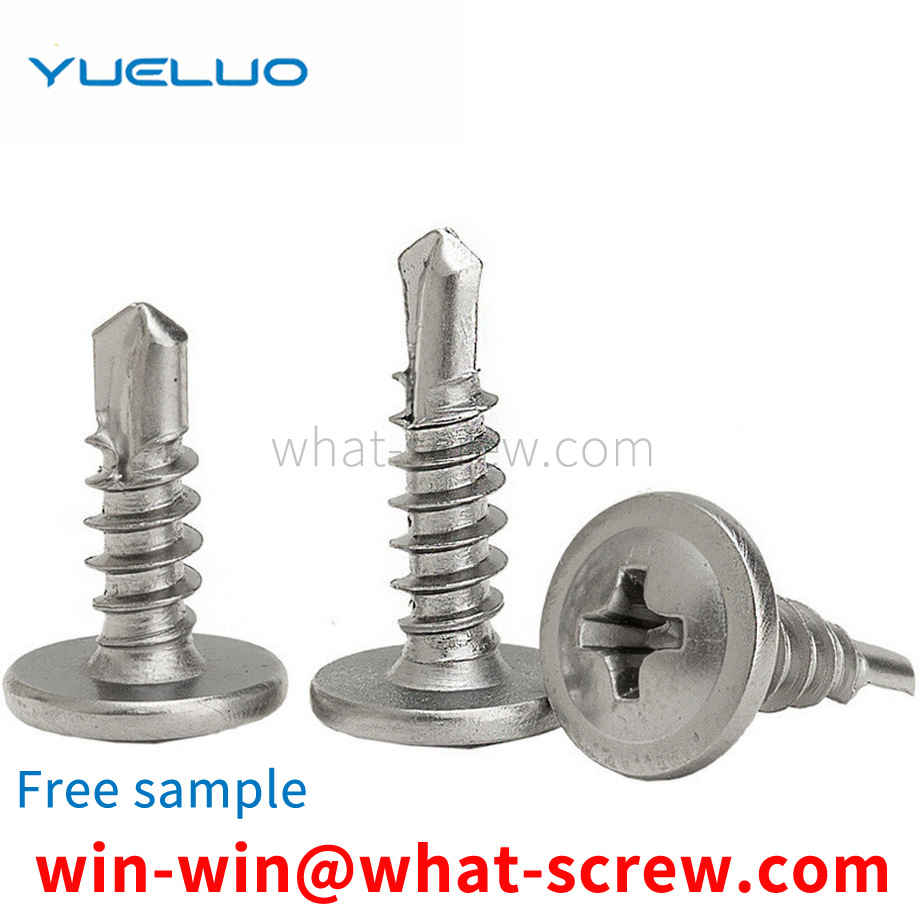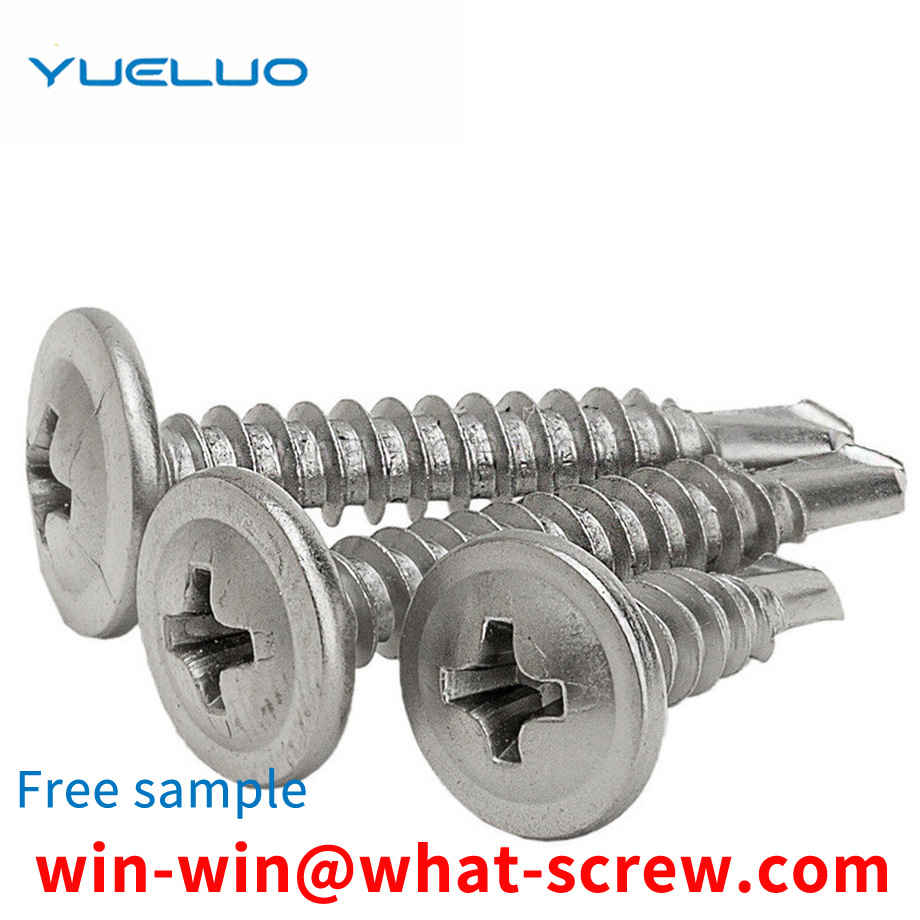The slotted nut mainly refers to the hexagonal slotted nut, that is, the slot is machined above the hexagonal nut. It is used in conjunction with screw bolts with holes and cotter pins to prevent the relative rotation of the bolts and nuts, see GB6178 ~ 6181 and so on.
Each self-tapping screw is composed of three parts: the head, the shank and the end of the shank. The composition of each self-tapping screw has four major elements: head shape, wrenching method, thread type, and end form. 1. Head Shapes There are various head shapes. There are round head (semi-round head), flat round head, round head flange (with pad), flat round head flange (with pad), pan head, pan head flange (with pad), countersunk head, semi-countersunk head, Cylinder head, spherical cylinder head, horn head, hexagonal head, hexagonal flange head, hexagonal flange (with pad) head, etc. 2. Wrenching method The wrenching method refers to the way of twisting the head of the screw when installing and tightening the screw. There are two basic methods: external wrench and internal wrench. Generally speaking, external wrenching will allow more torque than any form of internal wrench (internal groove). External wrench: hexagon, hexagonal flange surface, hexagonal flange, hexagonal flower shape, etc.; internal wrench: flat groove, cross groove H type, cross groove Z type, cross groove F type, square groove, compound groove, inner flower Key, inner hexagon flower, inner triangle, inner hexagon, inner 12 corner, clutch slot, six-blade slot, high torque cross slot, etc. 3. There are many types of threads, including self-tapping threads (wide thread), machine threads (ordinary threads), drywall screw threads, fiberboard screw threads, and some other special threads. In addition, threads can be divided into single-lead (single-end), double-lead (double-end), multi-lead (multiple-end) and high-low thread double-end threads. 4. Terminal form There are two main types of terminal form: tapered end and flat end. However, according to the needs of use, at the screw-in part of the end, grooves, grooves, incisions or parts with a similar drill shape can be processed with cutting function. In some standards, it is also a tapered end or a flat end, and there are different forms such as a rounded end.
The flange nut and the general hexagon nut are basically the same in size and thread specification, but compared with the hexagon nut, the gasket and the nut are integrated, and there are anti-skid tooth patterns on the bottom, which increases the nut and the workpiece. Compared with the combination of ordinary nut and washer, it is stronger and has greater tensile force. In some equipment with large vibration amplitude, due to the action of huge vibration force, the flange nut is prone to loosening, which often occurs. If the flange nut falls off the equipment or even damages, the staff also needs to install the flange nut repeatedly, which increases the labor intensity and brings great inconvenience to the use. Now a split type tightening nut is proposed.
Stainless steel bolts refer to bolts made of stainless steel, including stainless steel SUS201 bolts, stainless steel SUS304 bolts, stainless steel SUS316 bolts, and stainless steel SUS316L bolts. The performance grades of stainless steel bolts, studs and studs are divided into 10 grades: from 3.6 to 12.9. The number before the decimal point represents 1/100 of the tensile strength limit of the material, and the number after the decimal point represents 10 times the ratio of the yield limit to the tensile strength limit of the material.
Fasteners play a very important role in the installation of the main engine. Complex products such as airplanes, automobiles, trains, elevators, air conditioners, and computers all have the problem of installing components on thin plates. There are two traditional installation processes. One is The first is to tap the internal thread on the thin plate, but when the internal thread is tapped on the thin plate below 6 mm, the installation is often not firm because the number of threads is too small, and even the connection fails due to the broken thread when the force is applied; the second way It is a process of welding nuts on a thin plate, which easily leads to deformation of the thin plate and uneven welding surface. Sometimes the welding is not strong and the nut falls off when the force is applied, resulting in damage to the installation. The development of rivet nuts has solved the problem of installing components on thin plates, because rivet nuts combine the characteristics of nuts and rivets, and play an increasingly important role in fastener products. However, with the extensive use of rivet nuts in the electromechanical and mechanical industries such as automobiles, aviation, railways, refrigeration, elevators, etc., ordinary rivet nuts can no longer meet the special assembly requirements of many mechanical and electromechanical products, such as good sealing during assembly. Rivet nut with leak-proof function. Cantonese snail
We have many years of experience in the production and sales of screws, nuts, flat washers, etc. The main products are: enlarged washers, white flat washers, DIN7991 screws, cross recessed hexagon socket screws and other products, we can provide you with fastening suitable for you piece solution.



















 Service Hotline
Service Hotline




